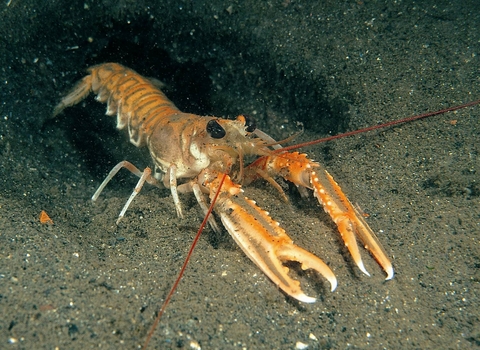
Scampi ©Paul Naylor www.marinephoto.co.uk
Scampi
Did you know your seaside scampi was actually a kind of lobster? Traditionally so - although the scampi that is often eaten with chips can be anything from prawns to fish.
Scientific name
Nephrops norvegicusWhen to see
January to DecemberTop facts
About
Scampi, Dublin Bay prawn, langoustine, nephrops, Norway lobster - call it what you will, this little orange lobster is the most commercially important crustacean in all of Europe.They live in self-dug burrows in the seabed, hiding away during the daytime and appearing at night to feed on crustaceans, molluscs, worms and starfish. They are highly territorial, aggressively defending their burrows and leaving only to feed or mate - though they don't really like to travel great distances to do either! Although they can swim, they prefer to crawl along the seabed.
Once a female has mated, she will return to her burrow with the fertilised eggs attached to her swimming legs. This protects the eggs from hungry predators. We say that a female lobster carrying eggs is "berried".
